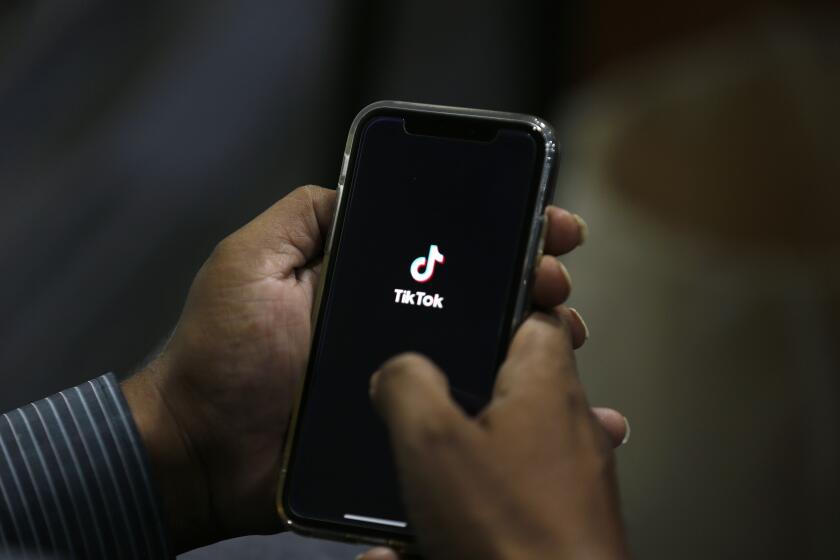Price War, Job Cuts Hurt Kodak
- Share via
Eastman Kodak Co. lost $744 million in the fourth quarter, weighed down by the cost of 16,600 job cuts and a price war with Japanese rival Fuji Photo Film Co. that contributed to a 13% sales drop.
The loss worked out to $2.29 per share in the October--December quarter, contrasted with a profit of $164 million, or 48 cents a share, a year ago. Sales were $3.83 billion, down from $4.42 billion a year ago.
Even without the cost of job cuts and other one-time items, profit would have fallen 38% to $246 million, or 76 cents per share. That is slightly higher than the 74-cent-per-share profit Wall Street had been expecting, according to a survey of analysts by First Call Corp.
But Kodak said the strength of the U.S. dollar and steady competition will hurt profit in the January-March quarter and leave results below those of a year earlier.
Sun Microsystems Inc. said its fiscal second-quarter profit rose 25%, spurred by strong sales of its high-performance servers and storage devices. Profit rose to $223.2 million, or 57 cents a diluted share, from $178.3 million, or 46 cents, in the year-earlier period. The results were above the 54 cents expected by analysts surveyed by IBES International Inc.
Sun is the third large technology company this week to report results largely unaffected by the Asian economic crisis, following on the heels of Motorola Inc. and Intel Corp. The company’s computer-networking software is also holding its own against rival Microsoft Corp.’s NT operating system, which is used in computer networks and workstations.
Digital Equipment Corp. said fiscal second-quarter net income more than doubled as it cut costs and took gains on selling some assets, which helped offset a decline in revenue because of a strong U.S. dollar. The computer maker said profit in the period ended Dec. 27 was $74.8 million, or 44 cents a diluted share, up from $31.9 million, or 15 cents, a year earlier. That matched the average estimate of analysts polled by IBES International Inc.
Unisys Corp. said profit, before $1.05 billion in charges, rose to $86.9 million, or 25 cents a diluted share, from $55.7 million, or 14 cents, in the year-earlier period.
Quantum Corp. said it earned $47 million, or 29 cents a diluted share, before a charge, down from $52.4 million, or 36 cents, in the year-earlier period.
H.F. Ahmanson & Co. said fourth-quarter earnings rose 9%, exceeding expectations, as the expanding California economy helped the thrift reduce bad loans and real estate losses. The nation’s second-largest thrift said net income rose to $99.5 million, or 89 cents a diluted share, from $91.2 million, or 74 cents, in the same period a year earlier. That exceeded the average forecast of 87 cents from analysts surveyed by IBES.
At a Glance
Freddie Mac said fourth-quarter net income rose to $372 million, or 51 cents a diluted share, compared with $321 million, or 42 cents, a year earlier.
Bear Stearns Cos. said profit from operations fell to $170.7 million, or $1.18 a share, from $176.5 million, or $1.21, in the year-earlier period. The results exclude a one-time charge related to the settlement of claims about price-fixing on Nasdaq.
Jacobs Engineering Group Inc. posted fiscal first-quarter net income of $12.8 million, or 49 cents a share, up from $10.9 million, or 42 cents, a year ago.
GBC Bancorp, parent of General Bank, posted net income of $7.9 million, or $1.10 per share, compared with $5.1 million, or 73 cents, a year earlier.
International Rectifier Corp. posted net income of $6.7 million, or 13 cents per share, up from $3.4 million, or 7 cents, in the year-earlier period.
ACT Networks Inc. posted a net loss of $483,000, or 5 cents per share, for the fiscal second quarter, contrasted with net income of $1.1 million, or 11 cents, a year ago.
Downey Financial Corp. reported net income of $14.0 million, or 53 cents a share, up from $8.7 million, or 32 cents, a year earlier.
More to Read
Inside the business of entertainment
The Wide Shot brings you news, analysis and insights on everything from streaming wars to production — and what it all means for the future.
You may occasionally receive promotional content from the Los Angeles Times.










